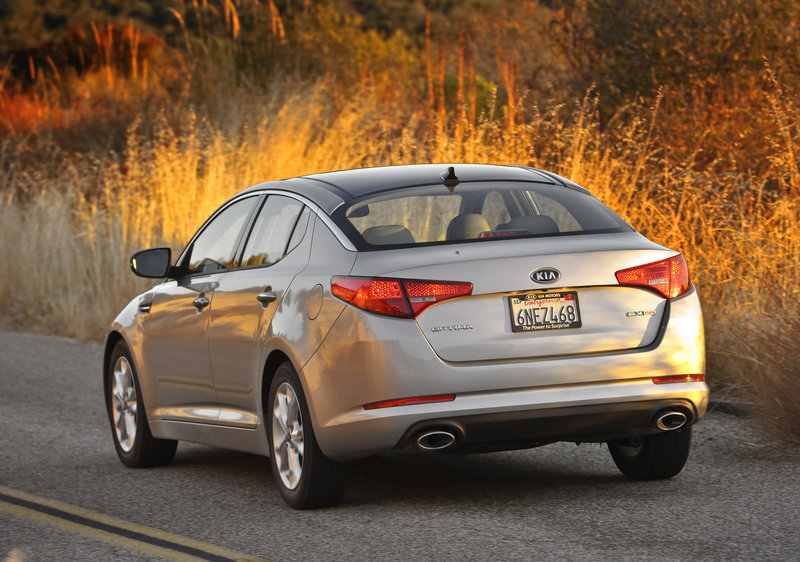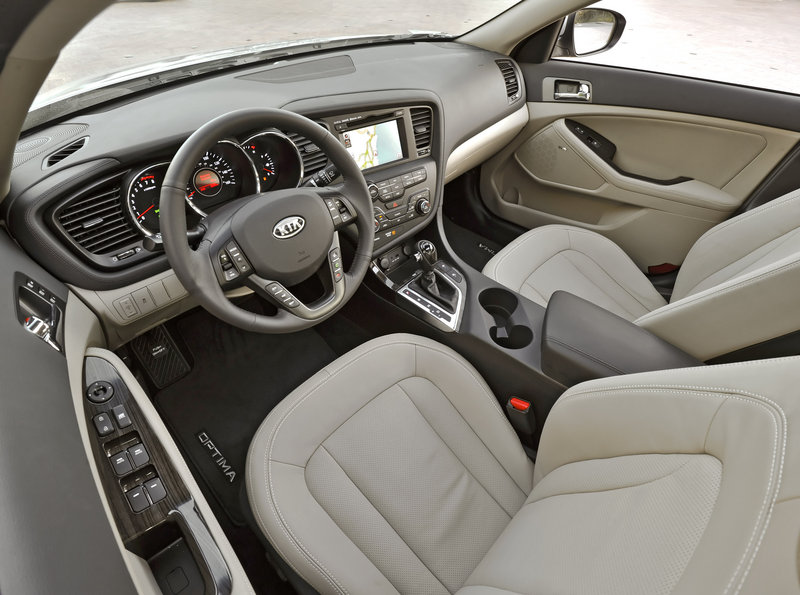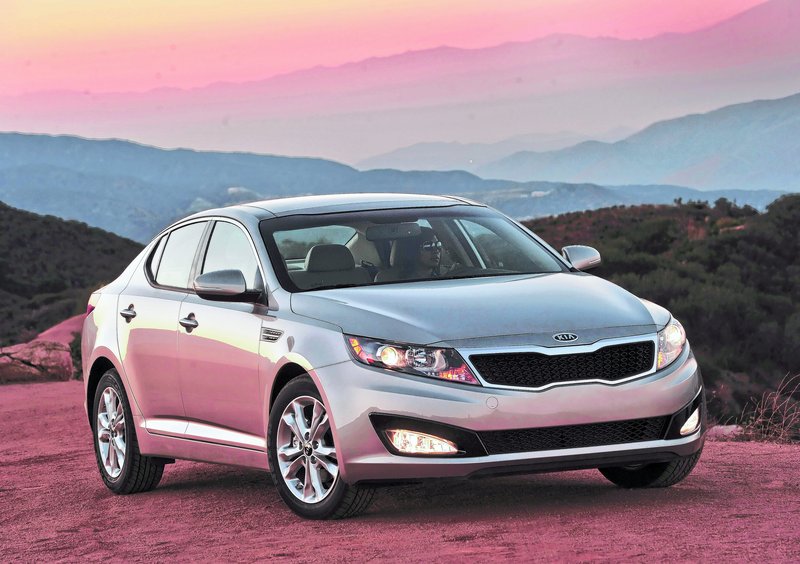Comparing the 2011 Kia Optima to its predecessor is like comparing a five-star restaurant’s filet mignon with a fast-food hamburger. Both are edible beef entrees, but they have little else in common.
Remember how the 2010 Optima …
… Wait a minute. Of course you don’t. The Optima has been so nondescript since its debut as a 2000 model that only owners would remember it — and there haven’t been many of those.
Optima sales surpassed 50,000 only one year and annual sales were generally far fewer than that. Since its introduction, Kia has sold a grand total of around 370,000 Optimas in the U.S., according to a company spokeswoman.
By comparison, the top-selling midsize sedan in America last year was Toyota’s Camry with nearly 330,000 buyers. Camry has been America’s best-selling car for nearly a decade, with a peak of nearly 450,000 sold by Toyota in 2006.
You could understand it if Kia executives felt a bit like the Lebron-less Cleveland Cavaliers taking on the Boston Celtics as they contemplated creating the 2011 Optima.
But Kia appears to have come up with a devastating slam-dunk in the new Optima. Because consumer-buying habits are hard to change and competition is fierce among midsize sedans, the Kia might have to settle for incremental rather than monumental gains in market share.
It won’t, however, be for lack of trying for the big three-point game-winner. The new Optima has “swish” written all over it.
For one thing, it’s gorgeous. Kia secured the services of one of Audi’s styling gurus a few years ago, so it’s not surprising that the 2011 Optima could pass itself off as a European touring sedan if the brand badging was removed.
It’s a similar story inside, where meticulous melding of high-grade materials makes for an elegant cabin. A driver-oriented cluster of large, legible instruments and a center stack of switches and controls canted toward the operator create a sporty and ergonomically effective cockpit.
Its interior and exterior styling is the biggest differentiator between the Optima and Hyundai’s Sonata, with which it shares most of its underpinnings.
The Optima’s sleek lines take a bit of a toll on rear-seat headroom, but the interior is otherwise roomy and comfortable. Most front-seat passengers will consider their accommodations spacious. And it’s hard to imagine anyone being disappointed with the Optima’s equally spacious 15.4 cubic-foot trunk, which makes it one of the midsize sedan class leaders.
My only quibble with Optima’s interior is that its front bucket seats aren’t as supportive as I’d like. They’re cushy, for sure, but I’d like a bit more side bolstering top and bottom, and a little more length in the lower cushion.
I’m hoping to find that when I get to test an Optima SX, the hot rod of the Optima lineup. The lineup currently consists of three trim levels, with a Hybrid about to join the team.
For now, consumers have a choice of entry level LX, mid-range EX and sporty SX trims. The $19,000 base LX gets a six-speed manual gearbox; the others get a six-speed automatic. The standard engine is a 200-horsepower, 2.4-liter in-line four-cylinder. A 274-horsepower, turbocharged 2.0-liter engine is available on the EX and standard on the SX.
My test car was a bread-and-butter EX with the normally aspirated engine. The engine was smooth and responsive, and it seemed to have a good teammate in Kia’s fluid-shifting, six-speed automatic transmission.
The drivetrain delivered the kind of power and refinement most consumers expect from a mainstream, midsize sedan.
What they might not expect is the kind of mileage Optima delivers, which is exceptional for a midsize sedan. The EPA rating is 24 city/34 highway, and I averaged just over 25 mpg overall during my test while making no effort to drive frugally.
I wasn’t overwhelmed by the Optima’s handling, but here again the SX would be the model of choice for folks who drive like me. While I prefer crisp handling even at the expense of a comfortable ride, I suspect the Optima’s moderate understeer and overboosted power steering will suit most midsize sedan buyers just fine.
And I’d be shocked if they had any complaints about the Optima’s quiet and comfortable ride.
There’s definitely no reason they should complain about the way Kia has equipped the Optima. Even the least expensive model comes with air conditioning, audio system with satellite radio and auxiliary input, tilt/telescope steering wheel with secondary audio controls, keyless entry and power windows and door mirrors.
The EX gets upgrades such as leather upholstery, power-operated driver’s seat, cruise control, auto-dimming rearview mirror, alloy wheels, heated door mirrors, fog lights and dual-zone auto climate control.
You get all of that for around $23,000. Those willing to spend a few more bucks can get features such as a heated steering wheel, power-cooled front seats, heated rear seats and a panoramic sunroof, some of which aren’t offered by the competition.
With the right marketing and Kia’s current momentum — it saw sales growth the past two years while most manufacturers were struggling — there’s no reason the new Optima shouldn’t snatch market share from that competition.
Scott Wasser is executive editor of MaineToday Media. He writes a weekly auto column for the Sunday Telegram and other newspapers. He can be reached at
swasser@pressherald.com.
Copy the Story Link
Send questions/comments to the editors.





Success. Please wait for the page to reload. If the page does not reload within 5 seconds, please refresh the page.
Enter your email and password to access comments.
Hi, to comment on stories you must . This profile is in addition to your subscription and website login.
Already have a commenting profile? .
Invalid username/password.
Please check your email to confirm and complete your registration.
Only subscribers are eligible to post comments. Please subscribe or login first for digital access. Here’s why.
Use the form below to reset your password. When you've submitted your account email, we will send an email with a reset code.